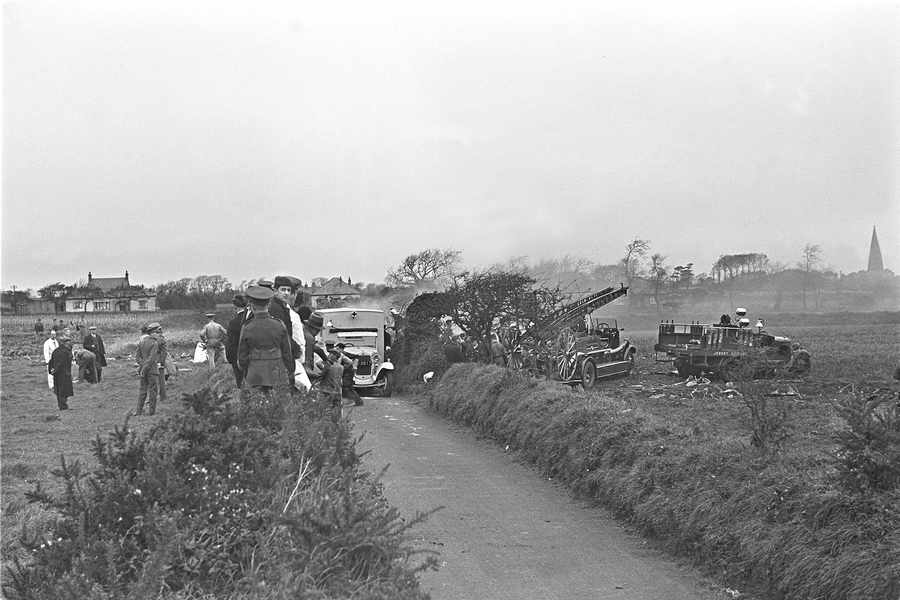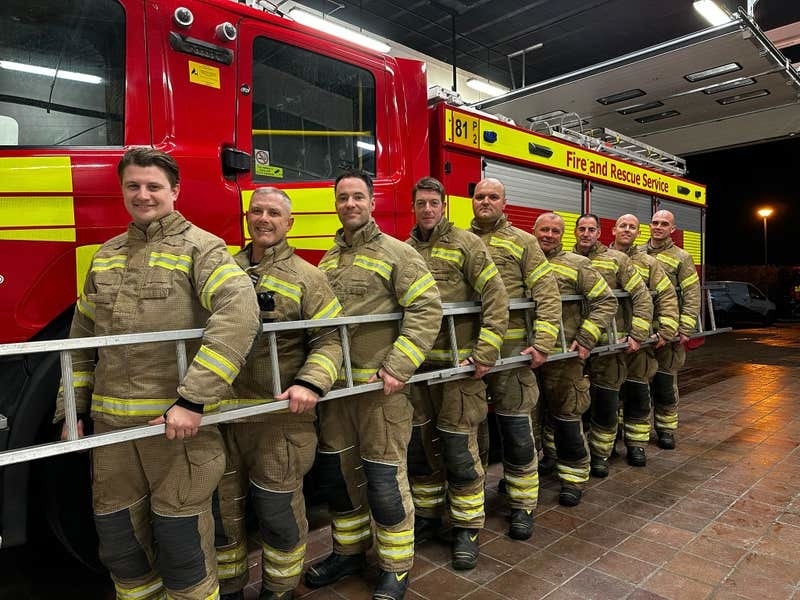Just before 11 am on 4 November a Jersey Airways DeHavilland DH86 four-engine biplane carrying two crew and 11 passengers took off from the Airport.
In misty conditions it climbed and began turning onto its course for Southampton, but a matter of moments after leaving the runway it plunged, engines screaming, into a St Peter field some 500 yards away from the Airport perimeter.
Its momentum carried it through a low hedge, over a lane and into a second field, where it burst into flames, killing everyone on board.
And as it crashed, its tailplane hit one of three men working in the field, killing him as well.
Numerous people witnessed the crash, but its cause remains a mystery.
Mechanical failure of some sort was in all probability involved, but the intense fire, fuelled by full tanks of aviation spirit, reduced the plane to a tangle of twisted and charred metal.
There were suggestions that the pilot, A G M Cary, who had previously been the private pilot of the Viceroy of India, had been trying to make a forced landing but failed to touch down safely because the plane’s undercarriage hit the ground and then ploughed catastrophically though the hedge of the first field.
J P Huelin, who was close to the scene of the crash with his son, J A Huelin, told the Evening Post that he had heard the plane’s engines ‘revving madly’.
He added: ‘We rushed to the scene but it was almost impossible to get anywhere near the raging inferno.’
He also said that bodies were thrown out by the force of impact and by the explosion of the plane’s fuel tanks but that they ‘had passed all human aid’.
The EP recorded that ‘mute witnesses of Mr Huelin’s efforts to extricate some of the bodies from the wreckage were his singed arms and burnt cap’.
An ambulance and a fire engine were on the site within five minutes of the crash. They were soon followed by members of the honorary police and personnel from St Peter’s Barracks, but nothing could be done to help passengers, crew or the farmworker who had been struck as the plane hit the ground.
It soon emerged that the farmworker was Edmund Le Cornu, the foreman of St Peter Farm which belonged to a Mr Laurens.
The information was volunteered by a severely shaken Peter Le Saux, who had come within an inch of sharing his colleague’s fate. He explained that as he flung himself to the ground, a wingtip grazed his cheek as the plane careered by.
As well as the pilot and Mr Le Cornu, the dead included radio officer R J Lyons, Capt Swan, Mrs Swan and their baby, Mr T O Cox, a Mr Spring, Miss Janet Hansford, a Mr Kersley, Mr F Berry, Mrs L H G Wall, and Maj Gerald H Voisin and Mrs Voisin.
Maj Voisin, a veteran of the Western Front, was well known as the proprietor of Voisin’s the St Helier department store, Capt Swan was a British Army officer who was on his way with his wife to rejoin his unit in India, and Miss Hansford was a General Hospital nursing sister.
Meanwhile, two men were extremely fortunate in that they missed the ill-fated Southampton flight. They had travelled from Guernsey on the mailboat, but missed their connection by five minutes.
The load sheet had already been calculated to determine how passengers should be seated and cargo loaded, so they were refused permission to board.
One of the men, Louis Morris, described in the EP as a UK ‘cinema magnate’, dashed from the Airport terminal to the crash site.’
He said: ‘It was a ghastly sight – one I shall never forget,’ though he, too, confirmed that there was no possibility of saving anyone.
• For many years, the 1938 crash remained the Island’s worst air disaster. However, on 15 April 1965 a Jersey Airlines Dakota flying to the Island from Orly, near Paris, crashed in bad weather as it approached the Airport from the east. There was one survivor, an air hostess, but 27 passengers and crew were killed.
The emergency services at the scene of the crash on 4 November 1938 (00816207)
J P Huelin, wearing his burnt cap, who dashed to the scene with his son, J A Huelin (00816622)






